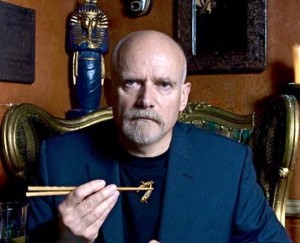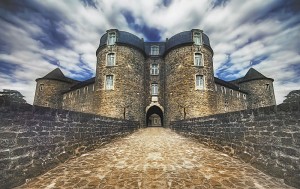“When writing stories, people say begin where it begins…But how does anyone know where anything really begins? Did this story begin the day I met Virginie, the day I arrived at the military academy to be greeted by Jerome and Charlot, that day, years before, when I first met Emile, or did it begin with the dung heap, when I sat in the sun eating beetles? Looking back on the days of my life, I can’t think of any time I was happier.” –Jean-Marie Charles d’Aumout, 1790.
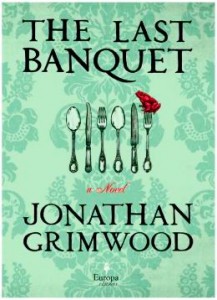
Some might read this quotation as a symbolic statement by a person who has found rays of hope for a bright future in the midst of horror or degradation. In this case, however, the statement by Jean-Marie Charles d’Aumout must also be taken literally. The novel opens with the speaker, a child of six, “sitting with my back to a dung heap in the summer sun crunching happily on a stag beetle and wiping its juice from my chin and licking my lips and wondering how long it would take me to find another.” As repulsively specific as the image is, it is not included in the opening scene gratuitously or merely to gain the reader’s instant attention (which it does, anyway). It is part of this character’s obsession with tasting every possible flavor in the world, no matter where it might be found, and no matter how repugnant the “food” might be to the rest of the world. At the same time, however, Jean-Marie’s everyday life in eighteenth century France is so fascinating for other reasons – historical, cultural, and political – that even the most squeamish reader is likely to become so caught up in his story that the food-tasting becomes merely one more aspect of his unusual life.
Jean-Marie, the six-year-old son of a noble, has just been found beside his parents’ dwelling by His Highness “le Regent,” also known as the duc d’Orleans, former guardian of young Louis XV. Le Regent’s aide-de camp, Louis, vicomte d’Anvers, accompanies him, along with a “sulking youth,” the Regent’s bastard son Philippe. These nobles, having received a letter sent by the boy’s father a month earlier, have come in response to his message. While the vicomte and Philippe go inside the family’s decaying chateau, and which the boy has been warned by his parents not to enter, le Regent feeds the hungry child, introducing him to something new – Roquefort cheese, “a taste of sourness so perfect the world stopped.” The vicomte and Philippe confirm le Regent’s suspicion that the boy’s parents are dead and announce that the chateau has been ransacked by peasants. The child departs with these nobles while dozens of peasants who had worked at the chateau are hanged for theft.
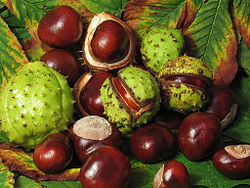
When bullied on the first day of school, Jean-Marie attacks back with "conkers," a new word for what I have always known as "horse chestnuts."
Clearly establishing the mores and absolute privileges of the nobility, and contrasting them with the lives of the often starving peasants, the author lays the groundwork for the later ideas of the Enlightenment and sets up, in a very immediate and specific way, the background for the eventual French Revolution. As the boy himself notes later, “The villagers could be taxed and beaten and thrown off their fields and tried with the most perfunctory of trials. Those things could not be done to me. Nor could I work, of course. Unless it was my own land.” Attending a school for the children of nobility, which is shown to be a microcosm of the French state itself, and later selected to attend a military academy, Jean-Marie comes to life as a real boy living in an almost surreal atmosphere, described so vividly that no reader will question the accuracy of the descriptions. With two friends, Charlot (Charles, marquis de Saulx) and Jerome (vicomte Jerome de Caussard, second son of the comte de Caussard), Jean-Marie comes to understand the obligations of his class, while still acting like the child he is. A third friend, Emile Duras, the son of a wealthy lawyer who has bought his son’s acceptance into the school, shows him other aspects of the life of the privileged, even if they are not of noble birth.
As the novel progresses, the author recreates the growing economic disasters in France in the mid-1730s, as poor harvests, savage winters, and spring flooding leave peasants starving, though everyday life remains relatively unchanged for Jean-Marie and his friends, who continue to enjoy their privileges, which they take for granted. Jean-Marie becomes a duke at almost twenty, marries, and inherits a somewhat dilapidated chateau in the south of France, into which he moves with his wife. Years pass as the author fills the novel with Jean-Marie’s picaresque personal adventures, his boldly described sexual experiences, his intellectual curiosity (and his limitations), and his willingness to experiment with new inventions.
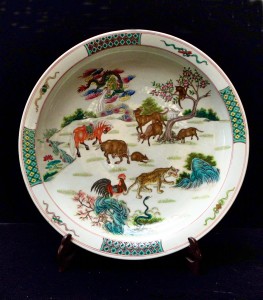
When Jean-Marie becomes settled in his chateau, he orders Chinese porcelain with animals. Here, the tiger may be discerned above the snake. Click to enlarge image.
Lively, exciting, and often astonishing in its originality, the novel has something for everyone—history, adventure, high excitement, several love stories and their complications, and the growth of new ideas. The historical detail (including descriptions of a Versailles filled with filth) keeps the setting and time period lively and intriguing even for those who may not usually be fans of “historical” novels, and Jean-Marie’s appointment as Master of the Menagerie at Versailles, provides colorful new twists to the plot, with a tiger, which eventually lives at Jean-Marie’s chateau, becoming a symbol of the coming revolution. His mission to Corsica and its aftermath provide insights into other, broader aspects of European history, while his correspondence with Voltaire and the Marquis de Sade, and his meetings with Benjamin Franklin, add depth to the intellectual framework. Throughout, the author is always careful to ensure that the novel is specific as to time period, often beginning his chapters with the dates, from 1723, when the novel begins, to 1790, with the “Barbarians at the Gate.”

A slow loris, like the one which someone delivers to Jean-Marie and which kills one of his servants. Photo by Franz Lanting/Corbis
I have deliberately omitted discussing the unusual tastes which obsess Jean-Marie d’Aumout – and he tastes absolutely everything – until now. That aspect of the book will preoccupy (and undoubtedly repel) many readers and reviewers, but it is less the focus than it might seem initially. Pickled wolf’s heart, three-snake bouillabaisse, flamingo tongue, and raw bats, among many other such “delicacies,” most of which “taste like chicken,” take the novel out of the ordinary and add a whole new dimension to the focus of the novel and its times. The recipes do fit in with the other sensual aspects of the novel, without overwhelming it. The author’s creativity and his immense gifts for description are astonishing on all levels, and the novel itself, while sometimes bizarre, gives new life and a new kind of reality to some tired genres.
A note about the author. Though this is British author Jonathan Grimwood’s first novel published as “literary fiction,” he has, during the past fifteen years, written science fiction, fantasy (including vampire novels), and novels of alternative history under the name of Jon Courtenay Grimwood. Between 2000 and 2006, he was nominated seven times for the British Science Fiction Award, and he was winner of that award twice. It may be that background which enlivens this novel in surprising new ways.
Photos, in order: The author’s photo by Martin Pope appears on http://www.telegraph.co.uk/ and accompanies an article about some of the unusual “foods” that the author himself has enjoyed.
“Conkers,” known in the US as horse chestnuts, were thrown at an attacker by Jean-Marie when he first started school. The photo is from http://en.wikipedia.org/
The medieval Chateau d’Aumont, perhaps similar to those mentioned in the novel, is shown here: http://www.panoramio.com/ in a photo by Guido Musch.
To celebrate the animals which fascinate him, Jean-Marie orders a set of porcelain from China which depicts some of his favorites, especially the tiger, shown here at the bottom of the plate, above the snake. Click on the photo to see an enlargement. http://www.ebay.com/
The photo of the slow loris, by Frans Lanting/Corbis, accompanies an article about the illegal trade in animals at http://www.theguardian.com/
ARC: Europa
